M
I
C
R
O
S
T
O
R
Y
O
F
A
R
T
........................................................

NOW COMPLETED:

........................................................
MICROSTORY OF ART
ONLINE JOURNAL FOR ART, CONNOISSEURSHIP
AND CULTURAL JOURNALISM
........................................................
INDEX | PINBOARD | MICROSTORIES |
FEATURES | SPECIAL EDITIONS |
HISTORY AND THEORY OF ATTRIBUTION |
ETHNOGRAPHY OF CONNOISSEURSHIP |
SEARCH

........................................................



 >MICROSTORIES
>MICROSTORIES
- Richard Serra
- Martin Scorsese
- Claude Simon
- Sunshine
- Werner Herzog
- The Creation
- Marcel Duchamp
- Nino Rota
- Wölfflin and Woolf
- Hansjörg Schneider
- Kraftort Arkadien
- Visual Biography
- Schlaraffenleben
- Die Geisteswissenschaften
- The Voyeur
- Buzzword Sustainability
- Paul Verlaine
- Tao Yuanming
- New Beginning
- Seneca
- Still Lifes
- Charles Baudelaire
- Frédéric Chopin
- The Art History of Sustainability
- Wang Wei
- Solarpunk
- Historians of Light
- Lepanto
- Renaturalization
- Plates
- Snow in Provence
- Learning to See
- Picasso Dictionaries
- Peach Blossom Spring
- Picasso Tourism
- Tipping Points
- Sviatoslav Richter
- Weather Reports
- Treasure Hunt
- Another Snowscape in Picasso
- Picasso in 2023
- Dragon Veins
- The Gloomy Day
- The Art of the Pentimento
- Reforestation
- The Status of Painting
- Emergency Supply
- Punctuality
- Watching Traffic
- Zhong Kui
- How Painting Survived the 1990s
- Confirmation Bias
- Sustainability and Luxury
- Garage Bands
- Picasso and Artificial Intelligence
- Eyes of Tomorrow
- Picasso in 2023 2
- Gluing Oneself to Something
- Suburbia
- Bamboo
- Sustainability and Carpe Diem 1
- Interviews with Bruegel
- Sustainability and Carpe Diem 2
- Coffee & Sugar
- Bamboo 2
- Picasso in 2023 3
- Sustainability and Carpe Diem 3
- Cherry Orchard
- Old Magazines
- Chance
- Nick Drake
- Harlequin
- The Smartphone & the Art Book
- Atlas Syndrome
- The Kitchen
- Atlas Syndrome 2
- Consideration
- Tori Amos
- School
- Orchard Auctioning Day
- The Hundred Years’ War
- Sócrates
- Chameleon
- Nefertiti Bust
- Picasso as a Computer
- Sunflowers
- Philemon & Baucis
- Ode to the Radio
- Childhood
- Wimmelbild
- Restitution
- Nick Drake 2
- Wishful Thinking
- Sundays
- The Independent Scholar
- September
- The Fisherman by Pirosmani
- Microadventure
- Sociology
- Salvator Mundi
- Chillon
- Appassionata
- Amber
- Homer
- Berlin
- Planet Walk
- Improvisation
- Seeing Picasso
- These Nice Kids
- Robber
- The One
- The Sea Turtle
- Zoo
- Through the Hush
- Wunderkammer
- I Do Not Seek, I Find
- Shopping Mall
- Food Hamper
- The Secretary
- This Gate
- Nor Rainy Day
- House on a Hill
- Beautiful Island
- Second-hand Bookstore
- Flat
- Slap in the Face
- Serra, Wenkenpark
- Apologies
- The Bells
- Nordmann Fir
- Picasso Wanting To Be Poor
- Picasso, Pirosmani
- A Brief History of Sculpture
- 24 Sunsets
- Rusty Phoenix
- Glove
- Wintry Stanza
- A Song
- Like A Beatle
- Catching An Orange
- Solar Bees
- Permaculture

 >FEATURES
>FEATURES
- Van Gogh On Connoisseurship
- Two Museum’s Men
- Ende Pintrix and the City in Flames
- Titian, Leonardo and the Blue Hour
- The Man with the Golden Helmet: a documentation
- Un Jury d’admission à l’expertise
- Learning to See in Hitler’s Munich
- Leonardo da Vinci and Switzerland
- The Blue Hour Continued
- The Blue Hour in Louis Malle
- Kafka in the Blue Hour
- Blue Matisse
- Blue Hours of Hamburg and LA
- A Brief History of the Cranberry
- The Other Liberale in the House
- The Blue Hour in Raphael
- Who Did Invent the Blue Hour?
- Monet on Sustainability
- Velázquez and Sustainability
- The Blue Hour in Guillaume Apollinaire
- Van Gogh on Sustainability
- The Blue Hour in Marcel Proust
- Picasso and Sustainability
- The Contemporary Blue Hour
- The Blue Hour in 1492
- The Blue Hour in Hopper and Rothko
- Hopper and Sustainability
- The Blue Hour in Ecotopia
- The Hour Blue in Joan Mitchell
- Explaining the Twilight
- The Twilight of Thaw
- The Blue Hour in Pierre Bonnard
- Explaining the Twilight 2
- Picasso on Stalin
- Rubens on Sustainability
- The Salvator Mundi in Bruegel and Rubens
- The Blue Hour in Leonardo da Vinci and Poussin
- The Blue Hour in Rimbaud
- Faking the Dawn
- Frost and Thaw in Ilya Ehrenburg
- Picasso, Stalin, Beria
- Picasso, Solzhenitsyn and the Gulag
- Shostakovich on Picasso
- Hélène Parmelin in 1956
- Historians of Picasso Blue
- Picasso Travelling to Moscow 1
- The Blue Hour in Caravaggio
- Picasso Travelling to Moscow 2
- Picasso, the Knife Game and the Unsettling in Art
- Some Notes on Leonardo da Vinci and Slavery
- Picasso Moving to the Swiss Goldcoast
- The Blue Hour in Camus
- The Blue Hour in Symbolism and Surrealism
- Caspar David Friedrich in His Element
- Exhibiting the Northern Light
- Caspar David Friedrich in His Element 2
- Robert Schumann and the History of the Nocturne
- The Blue Hour in Robert Schumann
- Caspar David Friedrich and Sustainability
- The Twilight of Thaw 2
- Multicultural Twilight
- The Blue Hour in Anton Chekhov
- The Blue Hour in Medieval Art
- Twilight Photography
- The Blue Hour in Bob Dylan
- Iconography of Optimism

 >SPECIAL EDITIONS
>SPECIAL EDITIONS
- Visions of Cosmopolis
- Mona Lisa Landscapes
- Turner and Ruskin at Rheinfelden
- Painters On TV & On TV
- Spazzacamini in Art
- A Last Glance at Le Jardin de Daubigny
- The Experimental Cicerone
- A Dictionary of Imaginary Art Historical Works
- Iconography of Blogging
- Begegnung auf dem Münsterplatz
- Cecom
- Das Projekt Visual Apprenticeship
- Those Who See More
- A Fox on Seeing with the Heart
- Sammlung Werner Weisbach
- Daubigny Revisited
- Some Salvator Mundi Microstories
- Some Salvator Mundi Afterthougths
- Some Salvator Mundi Variations
- Some Salvator Mundi Revisions
- A Salvator Mundi Questionnaire
- A Salvator Mundi Puzzle
- Unknown Melzi
- Francis I and the Crown of Charlemagne
- From Amboise to Fontainebleau
- Drones Above Chambord
- Looking Back At Conques
- Flaubert At Fontainebleau
- Images of Imperial Ideology
- The Chronicles of Santa Maria delle Grazie
- Seeing Right Through Someone
- Melzi the Secretary
- Eying Glass
- A Foil to the Mona Lisa
- A Renaissance of the Cartoon
- Sketching a Family Tree
- Venetian Variations
- A Brief History of Digital Restoring
- A Consortium of Painters
- Leonardeschi and Landscape
- A Christ in Profile
- Learning to See in Spanish Milan
- A History of Gestures
- Leonardo and Josquin
- A Renaissance of the Hybrid
- Suida and Heydenreich
- The Watershed
- Three Veils
- From Beginning to End
- Connoisseurship of AI
- Twilight and Enlightenment
- The Blue Hour in Chinese Painting
- Dusk and Dawn at La Californie
- Iconography of Sustainability
- The Blue Hour in Goethe and Stendhal
- The Sky in Verlaine
- The Blue Hour in Paul Klee
- Iconography of Sustainability 2
- The Blue Hour in Charles Baudelaire
- From Bruegel to Solarpunk
- Some Salvator Mundi Documentaries
- Some More Salvator Mundi Monkey Business
- The Windsor Sleeve
- Brigitte Bardot’s Encounter with Picasso
- Art Historians and Historians
- A Salvator Mundi Chronicle
- The Salvator Mundi and the French Revolution
- The Fontainebleau Group
- The Encounter of Harry Truman with Pablo Picasso
- The Fontainebleau Group Continued
- The Windsor Sleeve Continued
- The Salvator Mundi in Early Netherlandish Painting 1
- Some Salvator Mundi Resources
- A New Salvator Mundi Questionnaire
- The Woman in Picasso
- The Yarborough Group
- Melzi, Figino and the Mona Lisa
- The Yarborough Group Continued
- A Salvator Mundi Global History
- The Salvator Mundi in Medieval Art
- The Salvator Mundi in Medieval Art 2
- The Salvator Mundi in Early Netherlandish Painting 2


 >HISTORY AND THEORY OF ATTRIBUTION
>HISTORY AND THEORY OF ATTRIBUTION
- The Mysterious »Donna Laura Minghetti-Leonardo«
- Assorted Demons of Connoisseurship
- Panofsky Meets Morelli
- Discovering the Eye of Sherlock Holmes
- Handling the Left-handed Hatchings Argument
- Visual History of Connoisseurship
- Alexander Perrig
- Connoisseurship in 2666
- What Postmodernity Has Done to Connoisseurship
- Dividing Four Fab Hands
- A Leonardesque Ambassador
- Test Cases in Connoisseurship
- A Raphael Expertise
- How to Tell Titian from Giorgione
- Louise Richter
- The Unique Property in the History of Connoisseurship
- An Expertise by Berenson
- The Book of Expertises
- An Album of Expertises
- An Expertise by Friedländer
- A Salvator Mundi Provenance
- How to Tell Leonardo from Luini
- An Expertise by Crowe and Cavalcaselle
- An Expertise by Bayersdorfer
- An Expertise by Hermann Voss
- An Expertise by Hofstede de Groot
- Leonardeschi Gold Rush
- An Unknown »Vermeer«
- An Expertise by Roberto Longhi
- An Expertise by Federico Zeri
- A Salvator Mundi Geography
- A Salvator Mundi Atlas
- The Bias of Superficiality
- 32 Ways of Looking at a Puzzle
- James Cahill versus Zhang Daqian
- Five Fallacies in Attribution
- On Why Art History Cannot Be Outsourced to Art Dealers
- On Why Artificial Intelligence Has No Place in Connoisseurship
- Salvator Mundi Scholarship in 2016
- Leonardo da Vinci at the Courts
- The Story of the Lost Axe
- The Last Bruegel
- A Titian Questionnaire
- On Where and Why the Salvator Mundi Authentication Did Fail
- The Problem of Deattribution

 >ETHNOGRAPHY OF CONNOISSEURSHIP
>ETHNOGRAPHY OF CONNOISSEURSHIP
MICROSTORY OF ART
ONLINE JOURNAL FOR ART, CONNOISSEURSHIP
AND CULTURAL JOURNALISM
........................................................

***
ARCHIVE AND FURTHER PROJECTS

1) PRINT


***
2) E-PRODUCTIONS


........................................................

........................................................

........................................................
FORTHCOMING:


***
3) VARIA

........................................................

........................................................

........................................................

........................................................

........................................................
***
THE GIOVANNI MORELLI MONOGRAPH

- The Giovanni Morelli Monograph
........................................................
MICROSTORY OF ART
ONLINE JOURNAL FOR ART, CONNOISSEURSHIP AND CULTURAL JOURNALISM
HOME
A Vision of China
A Vision of China

Yan Pei-Ming (http://en.wikipedia.org/wiki/Yan_Pei-Ming), View of Louvre exhibition Les Funérailles de Mona Lisa (2009) (picture: initiartmagazine.com)
This will not be a reflection upon Leonardo da Vinci’s vision of China (for his vision of the Far East see the section in my Leonardo da Vinci im Orient. Geschichte eines europäischen Mythos that I dedicated to all the Far East references in Leonardo’s work and especially to his reception of John Mandeville). No, this will be about what went on in the ›Leonardo world‹ during the three years after I had my study published in the winter of 2010/2011. About what went on – within the context of a changing world. It’s about impressions, observations and updates, and not least about reinterpreting one’s own book in the context of a changing world (which includes that we also explore new ways of publishing).
Leonardo da Vinci, today as ever, seems to represent the quintessence of Western civilisation; and he seems to maintain an almost unquestioned mythical status within Western culture. While the West, however, questions its relation to the Muslim world, to Russia, and to China. A vision of China refers here to a future vision of China in its future relation to the West, and as I have shown in my book, Western popular culture has been quite sensitive in confronting Leonardo da Vinci as a symbolical figure representing the West, with another symbolical figure, representing China, as early as in the 1990s in a popular novel. Whereas the Humanities and the discipline of art history in particular seem only now, and rather reluctantly, to be responding to the challenges of a changing world that include to relate one’s own culture to other cultural traditions, and at least the trying to see one’s own tradition from other viewpoints than one is used to.
Thus this section renews the invitation that my study of 2011 was and still is meant to be: to see Leonardo da Vinci, as a historical figure, in his relation to other cultural landscapes and viewpoints, to be located not only, but also in the Eastern world; and to see Leonardo, as a symbolical figure, within the symbolical and not only symbolical struggles of our age.
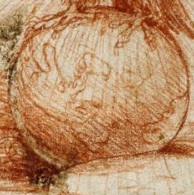
Selected cultural and political events and trends (2009-2013)
2009: US-President Barack Obama calls himself ›America’s first Pacific president‹
2009ff.: The Getty Foundation’s Connecting Art Histories programme (apparently established in 2009) supports various research initiatives (https://www.getty.edu/foundation/)
2010ff.: Arab Spring (beginning in December 2010)

(Picture: nyt.com)
2011: National Gallery of London’s Leonardo exhibition »Painter at the Court of Milan«
2011: Niall Ferguson’s Civilization (book and TV documentary) identifies six »killer apps« of Western power
2012: Niall Ferguson’s TV documentary on China

2012: 2008 founded Ukrainian feminist protest group FEMEN has Leonardo’s Vitruvian Man reworked into a Vitruvian Woman (picture above: alternativesocial.com)
2012: Italian art is shown at Beijing (see: http://www.arte.tv/de/italienische-kunst-in-china/6825088,CmC=6825428.html)
2013: at the Harvard Center Shanghai the conference The Italian Renaissance in China: New Research by Chinese Scholars takes place

Selected Leonardo curiosities and miscellanea (2010-2013)

(Picture: io9.com)
2010: the actors of the TV serial Lost pose as a Last Supper

(Picture: froehlichundkaufmann.de)
2011: a show at Aachen’s suermondt-Ludwig-Museum presents artist Joos van Cleve (http://en.wiki-pedia.org/wiki/Joos_van_Cleve) as the »Leonardo of the North«
2011: scientists find confirmation for a rule proposed by LdV as to the growing of trees (see Physical Review Letters 107)
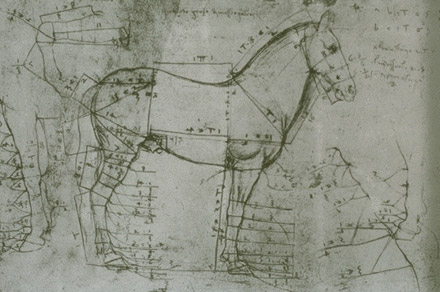
2012: the Neue Zürcher Zeitung (Nr. 184) informs, not without irony (and not without showing a Leonardo drawing of a horse), about everything to know for the buyer of a high-class horse (picture above: theequinest.com)
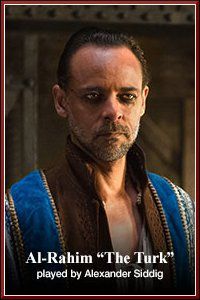
(Picture: losttv-forum.com)
2013: TV serial Da Vinci’s Demons is being aired (as to the character of Al-Rahim, »the Turk«, see here: http://davincisdemons.wikia.com/wiki/Al-Rahim)
Early in 2014 it was announced that the BBC was planning to redo an epoch-making programme: Civilisation, written and presented by art historian Kenneth Clark and aired in 1969. Although, earlier, the Sunday Times had mocked Clark’s TV performances (»the great elucidator woos his great audience with the head movements of a super-sapient tortoise and many an artful lapse into demotic speech«), I do consider this programme (and also the book) a classic, a milestone, a touchstone. But hasn’t it been redone already? Redone or replaced by Civilization [sic], the 2011 programme by Niall Ferguson (http://en.wikipedia.org/wiki/Niall_Ferguson ; http://www.niallferguson.com/) that explains to us, propagates and even – horribile dictu – reveals to others the six »killer apps« of Western power (as there are: competition, science, property/democracy/rule of law, modern medicine, consumerism and Protestant work ethic)?
What would Lord Clark have thought about this? Would he have thought about Lord Acton, the historian, commenting upon power and corruption? Or would he have thought it a matter of style and language (while he actually had agreed with Ferguson in a basically affirmative view of what has been achieved in the West? At any rate: Civilisation (with an s) does look as fresh as ever and as a classic can look like at all. It’s timeless and does confront an audience of today not only with »a personal view« of European civilisation, but also provides us with an example how huge discipline of reading results in (or can be hidden by) elegance and grace, of which Clark, in my view, can be seen as an embodiment (and I am speaking about a lecturer and not about a coach).
But Civilization (with a z) is about something that Clark, as far as I can remember, addresses rather indirectly, if at all: It is about Western strength, about Western power, Western dominance, about the »West and the Rest« (and about why there is asymmetry in the world, issues that Clark gives little room next to the works of art, of architecture and next to books and ideas that, of course, are more ambiguous). It is an affirmative view that Civilisazion (with a z) does propagate, but in making the supposed reasons for Western dominance transparent, it does recommend the »killer apps« to everyone. In sum and put into neutral words: It’s the view that would like to see everywhere being realized what is considered being good at home. And at Lord Clark’s time one would have identified this position with modernisation theory (why other theories then focussed more (or on the contrary) about dependencies, structural asymmetries, asymmetric relations and especially: forced asymmetry).
(Picture: telegraph.co.uk)
Leonardo da Vinci, of course, does figure prominently in Civilisation (with an s), and because Clark’s small Leonardo da Vinci biography can still be seen as a classic like Civilisation is, it is worth noticing that this small biography of 1939 bears also testimony to Clark’s attempt of comparing and thus associating Western and Asian art in some regards (and in this respect Clark obviously was following his mentor or godfather Bernard Berenson).
If Leonardo da Vinci, however, does prominently figure in Civilization (with a z) as well, is an interesting question. In his representing of the theoretical penetration of nature and of the Renaissance Man’s will to govern it, he does obviously represent the »killer app« of science (and, to some degree, of medicine). He actually is one or even the »killer« (even if, or even more so because of many of his achievements remained purely theoretical). And still, and this is one of the odd things, if one does observe the Leonardo world: He can also be seen merely as the painter at the court of Milan and as the courtier and by limiting the perspective of a Leonardo show he would not necessarily figure within Civilization (with a z) at all.
But only at a first glimpse:
(continued below)


(Picture: nationalgeographic.it)

(Picture: timesofmalta.com)


(Picture: arthistorynews.com)

(Picture: thesun.co.uk)
Selected events and ongoing controversies in Leonardo attribution (2010-2014)
2010: the portrait on vellum, known today as La Bella Principessa, is the subject of a book by Martin Kemp who presents the in the following much discussed portrait as a work by LdV (http://en.wikipedia.org/wiki/Portrait_of_a_Young_Fiancée)
2011: the rediscovery of a Christ as Salvator Mundi by hand of LdV is announced (http://en.wikipedia.org/wiki/Salvator_Mundi_%28Leonardo%29)
2011: the press reports that in Bavaria a painting is being claimed by its owners as a painting by LdV
2011ff.: ongoing »cerca, trova« investigation for a hidden fresco by LdV in the Palazzo Vecchio of Florence, conducted by Maurizio Seracini (http://de.wikipedia.org/wiki/Maurizio_Seracini)
2012: in Geneva a so-called »Ur-Mona Lisa«, kept in Switzerland, is being presented to the press
2012: the long known Prado version of the Mona Lisa (»Prado-sister«) is now being considered as possibly being painted in parallel to the Louvre Mona Lisa and possibly in Leonardo’s workshop
2013: news agencies and therefore the press report that a portrait of Isabella d’Este, being kept in Switzerland, has now been attributed to LdV
2014: The Christ as Salvator Mundi is being sold, after having appeared in the National Gallery’s Leonardo show of 2011, and without the documentation announced by the owners and expected by the scientific public ever having appeared in print; the whereabouts of the painting are now unknown to the general public (that is probably also confused by contradicting statements of Leonardo experts about which parts of the painting, if not the whole, is to be considered as being by the hand of LdV)

(Picture: frescotechnique.com)

(Picture: designyoutrust.com)
(continued from above)
Because for one: every Leonardo show, if it is a show of painting or of engineering genius, does show Leonardo as one of the wonders of the world. And because secondly: given this context, a new painting, only attributed to Leonardo, has been shown within the context of the London National Gallery’s 2011 Leonardo exhibition. And in 2014, after having been ennobled, it has been sold.
Thus, if Civilisation has to be redone any time soon, in shape, let’s say, of a mini series on Leonardo. I would propose to close this series with a programme on Leonardo da Vinci and capitalism (and consumerism, one of the »killer apps«). But more important I would find other programmes on Leonardo da Vinci and Russian art like, for example, I did propose in the section above, called Spotlight 2: An Icon Painter from Russia (http://www.seybold.ch/Dietrich/Spotlight2AnIconPainterFromRussia). And about Leonardo da Vinci and 1492, i.e. about Leonardo and his knowledge and his view of the European expansion, and so forth. And since he have mentioned the theoretical penetration of nature and the will to govern it, I would also propose a programme on Leonardo and sustainability, taking, in sum, the best and only the best of the two Civilisation/Civilization programmes.
PS: Leonardo da Vinci does figure in Ferguson’s Civilization book as being one of Lord Clarks heroes (see p. 2). Since Ferguson declares his view on civilisation/civilization to be more »down and dirty than high and mighty« one might also point to the fact that on page 199 (n. 1) he does explain how Lord Clark was provided with the means to be a gentleman scholar.

(Picture: nydailynews.com)
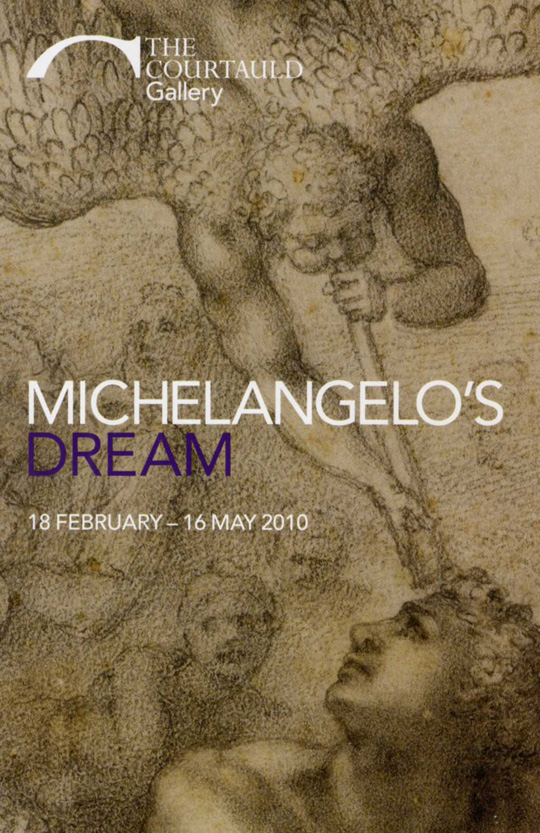
(Picture: timgosling.wordpress.com)
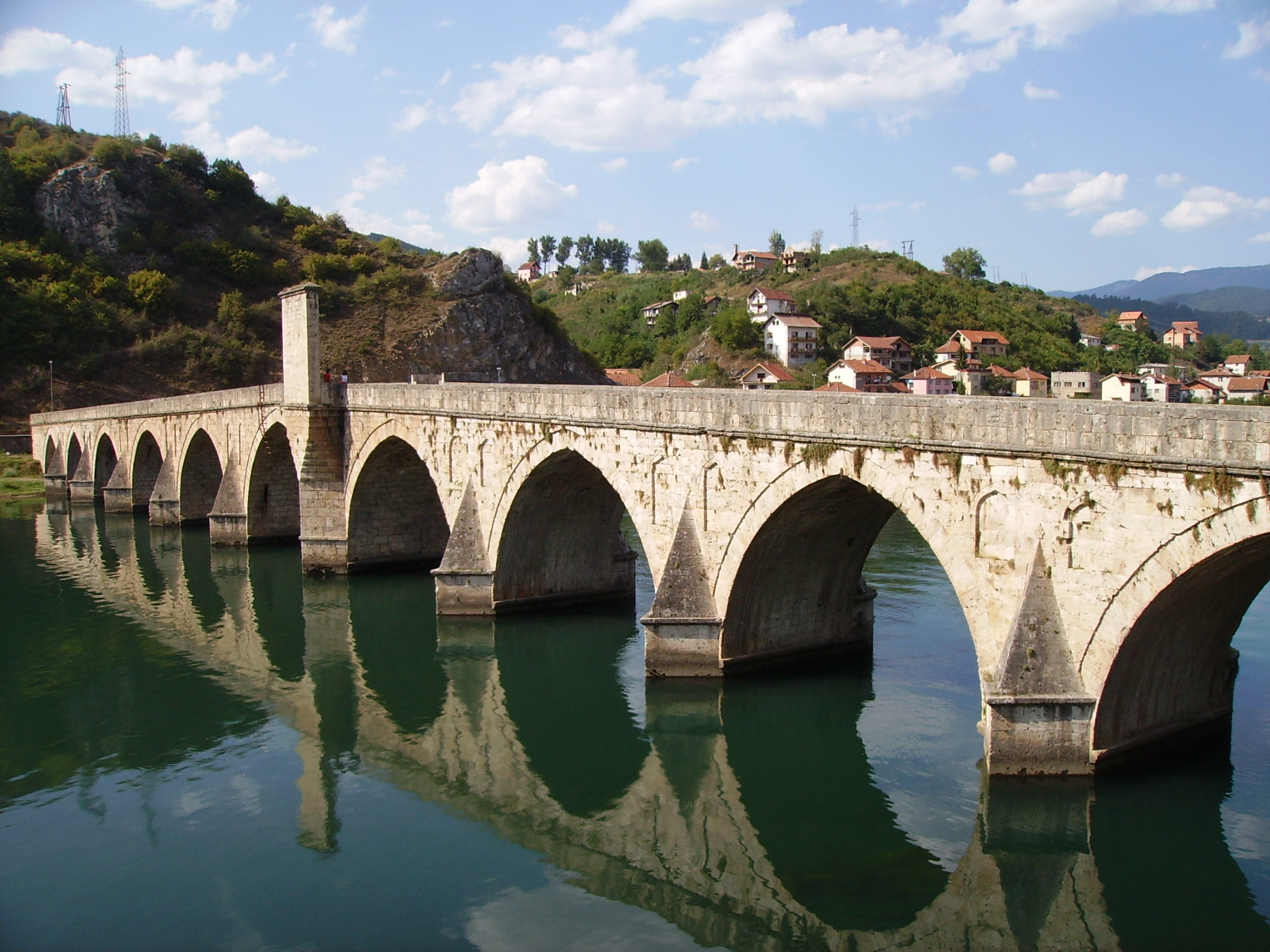
Visegrad Drina Bridge built by Sinan (picture: Julian Nitsche)

(Picture: muslimheritage.com)
(Picture: Sailko)
Some Michelangelo Addenda (2010-2014)
2010: Mathias Énard’s novella Parle-leur de batailles, de rois et d’éléphants about Michelangelo travelling to Turkey appears in French (2011 in German); it is developed after motives of Michelangelo biographies like the visual depiction of Michelangelo encountering the Sultan’s ambassadors in the Casa Buonarotti (shown above) was; neither Leonardo nor Michelangelo scholarship, despite of the fact that the competition between these two artists is a classical topic, have ever made much of the fact that the idea of a bridge over the Golden Horn was the only idea both Michelangelo and Leonardo da Vinci are actually to be associated with (for the history of the Galata bridge see: http://en.wikipedia.org/wiki/Galata_Bridge)
2012ff.: the press reports of expert’s fears that in the next decades to come the city of Istanbul might face a disastrous earthquake like in 1509 (and 1799); the 1509 quake, known by tradition as the ›Lesser Judgment Day‹ (http://en.wikipedia.org/wiki/1509_Constantinople_earthquake) and also being reported about in Renaissance Italy, has to be seen as a context of the Ottoman sultans wishing Italian engineers and archictects to come to Turky and help with the rebuilding of buildings, bridges and whole cities; the Turkish architect Sinan’s early career (cf. the Frankfurt show of 2008 and see: http://en.wikipedia.org/wiki/Mimar_Sinan) as a »Turkish Michelangelo« might be seen also within this very context of the aftermath of historical desaster; Leonardo’s interest, however, to construct a bridge over the Golden Horn dates some years earlier, of 1502/03, and is to be associated with other historical facts (see my Leonardo da Vinci im Orient. Geschichte eines europäischen Mythos for details)

(Picture: amazon.de)
Back to the starting page of Dietrich Seybold’s homepage: http://www.seybold.ch/Dietrich/HomePage
© DS